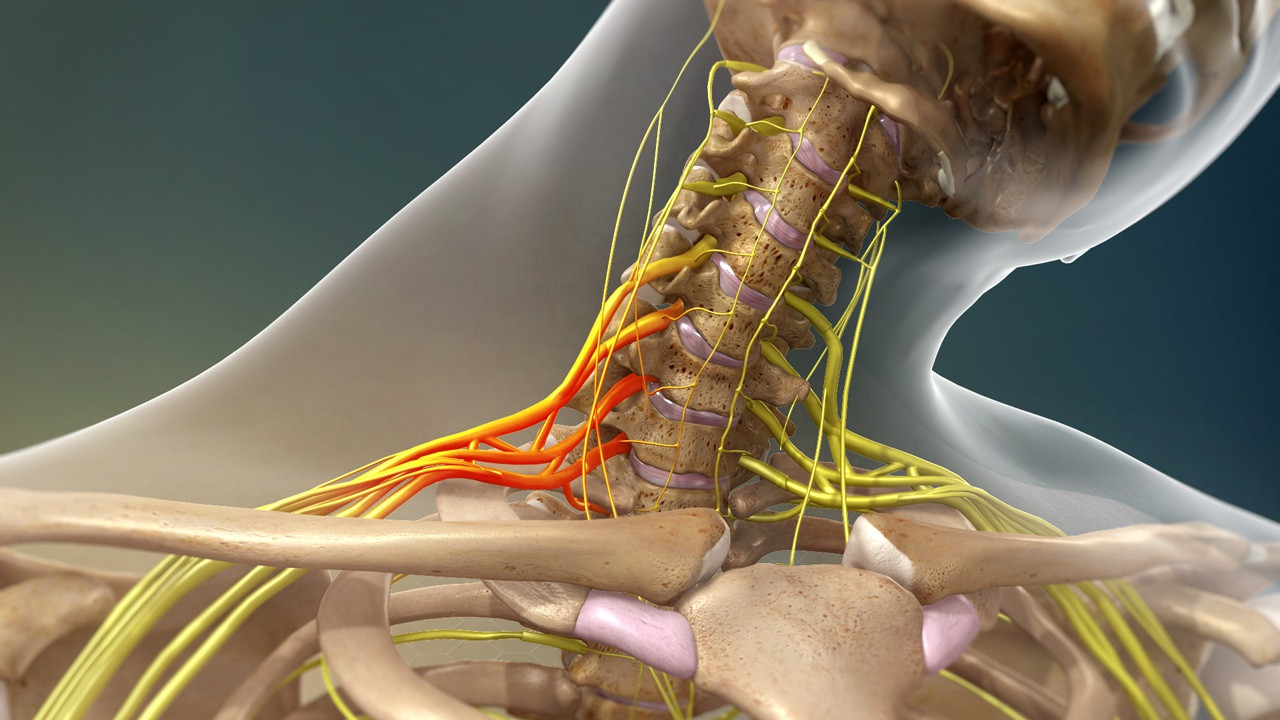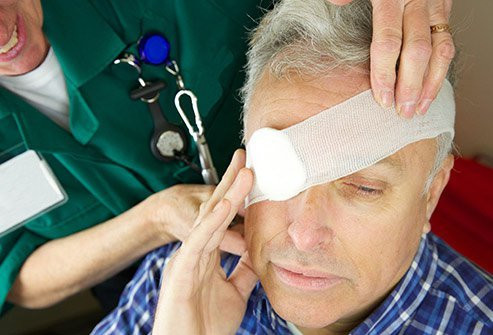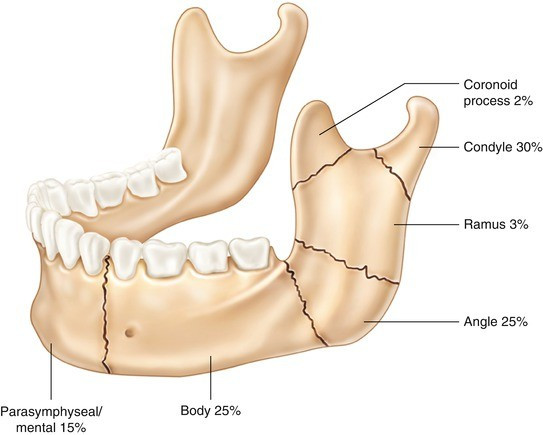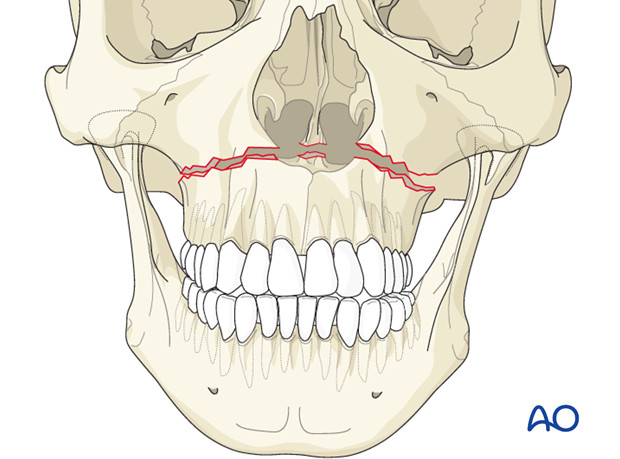Definisi
Cedera pleksus brakialis adalah cedera pada jaringan saraf yang mengirim sinyal dari sumsum tulang belakang ke bahu, lengan, dan tangan. Pleksus brakialis adalah jaringan saraf yang mengontrol sensasi dan gerakan dari lengan dan tangan. Kerusakan mendadak pada pleksus brakialis bisa menyebabkan kelemahan, kehilangan sensasi atau gerakan di bahu, lengan atau tangan.
Cedera bisa terjadi apabila saraf-saraf ini teregang, tertekan, atau pada kasus berat, robek di tengah atau robek dari sumsum tulang belakang, umumnya akibat olahraga atau kecelakaan (tersering kecelakaan lalu lintas).
Penyebab
Kerusakan pleksus brakialis bagian atas biasanya terjadi saat bahu dipaksa mengarah ke bawah sementara leher teregang ke atas. Sementara itu, pleksus brakialis bagian bawah lebih rentan cedera apabila lengan dipaksakan ke atas kepala. Beberapa cedera tersebut dapat terjadi dengan berbagai cara, misalnya:
- Olahraga dengan kontak fisik
Banyak pemain football mengalami cedera ringan pada pleksus brakialis, yang dapat terjadi saat pleksus brakialis teregang di luar batasnya ketika mereka bertabrakan dengan pemain lainnya.
- Sulit dilahirkan
Bayi yang baru lahir dapat mengalami cedera pleksus brakialis. Hal ini berhubungan dengan berat badan lahir tinggi, sungsang, atau proses persalinan yang lama. Jika bahu bayi tersangkut pada jalan lahir, risiko cedera pleksus brakialis lebih rentan terjadi. Cedera yang paling sering terjadi adalah cedera pada saraf bagian atas, yang disebut sebagai Erb’s palsy (cedera saraf pada bahu dan lengan yang menyebabkan kelemahan atau hilangnya fungsi otot).
- Trauma
Beberapa jenis trauma, misalnya seperti kecelakaan kendaraan bermotor, kecelakaan sepeda motor, jatuh, atau luka peluru, dapat menyebabkan cedera pleksus brakialis.
- Terapi tumor dan kanker
Terapi radiasi pada dada atau leher dapat menyebabkan tumor tumbuh di sekitar atau sepanjang pleksus brakialis, atau menekan pleksus brakialis dan menyebar ke saraf. Terapi radiasi pada dada dapat merusak pleksus brakialis.
Faktor Risiko
Faktor yang bisa meningkatkan risiko cedera pleksus brakialis adalah berolahraga dengan kontak fisik, terutama football dan gulat, atau terlibat dalam kecelakaan lalu lintas dengan impak tinggi.
Gejala
Gejala cedera pleksus brakialis tergantung dari bagian pleksus saraf yang terkena dan keparahannya. Cedera pada akar saraf di atas dapat memengaruhi bahu. Jika saraf pada bagian bawah mengalami cedera, hal ini akan memengaruhi lengan, pergelangan tangan, dan tangan. Gejala tersering dari cedera pleksus brakialis adalah sebagai berikut:
- Rasa baal atau mati rasa pada tangan atau lengan.
- Ketidakmampuan untuk mengontrol atau menggerakkan bahu, lengan, pergelangan tangan, atau tangan.
- Lengan yang jatuh lemah.
- Rasa nyeri seperti terbakar, tersengat, atau cepat dan parah pada bahu atau lengan.
Cedera pleksus brakialis dapat terjadi secara ringan hingga berat, sementara atau permanen, tergantung tipe dan luas cedera. Sebagai contoh, satu saraf yang teregang dapat nyeri selama seminggu, namun saraf yang robek dapat menyebabkan rasa nyeri yang kemungkinan memerlukan terapi fisik dan pembedahan.
Diagnosis
Pasien dengan cedera pleksus brakialis harus diperiksa dan ditangani dalam jangka waktu yang sesuai. Semakin lama otot tidak mendapatkan sinyal dari saraf, semakin rendah pula kemungkinan otot tersebut dapat berfungsi normal kembali. Hal ini tetap akan terjadi meskipun otot kembali mendapat sinyal dari saraf tersebut.
Pemeriksaan Fisik
Beberapa pemeriksaan langsung dapat dilakukan untuk membantu diagnosis cedera pleksus brakialis. Pleksus brakialis mengontrol beberapa bagian spesifik pada bahu, lengan, dan tangan, sehingga dokter akan memeriksa fungsi dari beberapa bagian spesifik tersebut. Sebagai tambahan, beberapa pasien dapat menunjukkan tanda yang dapat menandai posisi cedera saraf:
- Sindrom Horner dengan tanda pupil (bagian hitam di tengah mata) menyempit, kelopak mata jatuh, serta ketidakmampuan wajah untuk berkeringat adalah tanda yang terjadi apabila cedera mendekati sumsum tulang belakang.
- Nyeri seperti tertembak ketika dokter menyusuri bagian saraf (tanda Tinel) adalah tanda yang terjadi apabila cedera menjauhi sumsum tulang belakang. Jika tanda Tinel bergerak ke bawah dari lengan ke tangan seiring pemulihan, hal tersebut berarti saraf sedang memperbaiki diri.
Dokter juga dapat memeriksa kekuatan dan rentang gerak bahu dan lengan.
Pemeriksaan Pencitraan
Pencitraan juga dapat dilakukan pada kasus ini, misalnya:
- X-ray
Pemeriksaan x-ray atau rontgen dilakukan untuk menyingkirkan adanya kemungkinan patah tulang dada, bahu, dan lengan. Rontgen dada dilakukan untuk mencari patah tulang rusuk atau cedera paru. Jika Anda tidak dapat bernapas dalam saat pemeriksaan dilakukan, dokter dapat mempertimbangkan uji fungsi paru untuk menyingkirkan kemungkinan kerusakan pada saraf yang mengatur pernapasan dalam.
- Computed tomographic scan (CT scan)
CT scan merupakan tes yang paling dapat dipercaya untuk melihat adanya cedera saraf. Cairan kontras disuntikkan di dekat sumsum tulang belakang di leher untuk menunjukkan cedera pada foto CT. Pemeriksaan ini biasanya dilakukan 3-4 minggu setelah cedera untuk membiarkan bekuan darah di sekitar saraf hancur sebelum pemeriksaan dilakukan.
- Uji elektrodiagnostik
Pemeriksaan ini mengukur kecepatan hantar saraf dan aliran listrik dari saraf ke otot. Pemeriksaan ini penting untuk dilakukan karena dapat mengonfirmasi diagnosis, mencari lokasi tepat cedera saraf, mengukur keparahan, serta memeriksa kecepatan perbaikan saraf. Uji elektrodiagnostik biasanya dilakukan 3-4 minggu setelah cedera, sehingga saraf yang rusak dapat terdeteksi. Pemeriksaan ini dapat diulang 2-3 bulan untuk mengamati pemulihan saraf.
Tata Laksana
Cedera pleksus brakialis tidak selalu memerlukan penanganan. Beberapa orang, terutama bayi yang baru lahir atau orang dewasa dengan neuropraksia (kerusakan saraf tepi) dapat sembuh tanpa penanganan apapun, meskipun membutuhkan waktu sekitar beberapa minggu hingga beberapa bulan. Beberapa latihan dapat membantu pemulihan dan fungsi, namun, cedera serius dapat membutuhkan pembedahan. Pemeriksaan oleh tenaga kesehatan sangat diperlukan setelah terjadi cedera.
Terapi Non Bedah
Tata laksana cedera pleksus brakialis dapat berupa nonbedah, misalnya:
- Terapi fisik untuk mempelajari latihan yang dapat mengembalikan fungsi pada lengan dan tangan serta memperluas rentang gerak dan fleksibilitas pada otot dan sendi yang kaku.
- Obat suntik atau krim kortikosteroid untuk menurunkan gejala nyeri saat proses pemulihan.
- Alat bantu seperti braces, bidai, dan pad support.
- Obat antinyeri untuk membantu mengatasi nyeri.
- Terapi okupasi untuk mempelajari cara melakukan kegiatan sehari-hari seperti memakai baju dan memasak, terutama pada kasus yang melibatkan kelemahan otot serius, baal, dan nyeri.
Pembedahan
Tata laksana cedera pleksus brakialis juga dapat ditangani dengan pembedahan apabila tidak dapat sembuh sendiri. Jaringan saraf bertumbuh dan menyembuhkan diri secara lambat, sehingga hasil pembedahan seringkali baru dapat dilihat setelah beberapa tahun. Prosedur yang dapat dilakukan berupa:
- Perbaikan saraf untuk menghubungkan kembali saraf yang robek.
- Neurolisis, mengambil jaringan parut dari jaringan saraf untuk meningkatkan fungsi.
- Graf saraf, menghubungkan saraf yang robek dengan bantuan dari saraf yang sehat dari bagian tubuh lainnya sehingga menuntun pemulihan saraf.
- Transfer saraf, menempelkan saraf yang tidak terlalu penting namun masih berfungsi ke saraf yang rusak, menciptakan ruang untuk pertumbuhan baru.
- Transfer tendon dan otot, mengambil jaringan tendon dan otot yang tidak terlalu penting dari satu bagian tubuh ke lengan untuk mengembalikan fungsi.
Tata laksana ini perlu didiskusikan dengan dokter spesialis, untuk menentukan apabila Anda adalah kandidat yang baik untuk pembedahan.
Komplikasi
Komplikasis cedera saraf brakialis adalah sebagai berikut:
- Sendi kaku
Jika Anda merasakan kelumpuhan tangan dan lengan, sendi dapat menjadi kaku. Hal ini mempersulit gerakan, meskipun Anda dapat mengembalikan fungsi lengan. Oleh karena itu, dokter juga biasanya akan menyarankan terapi fisik saat pemulihan.
- Nyeri
Hal ini terjadi akibat kerusakan saraf yang menjadi kronis.
- Baal
Jika Anda merasakan baal pada lengan atau tangan, Anda berisiko terbakar atau cedera tanpa diketahui.
- Atrofi otot
Saraf berkembang secara lambat dan dapat membutuhkan beberapa tahun untuk pulih setelah cedera. Selama waktu itu, otot dapat mengecil dan melemah.
- Disabilitas permanen
Pemulihan cedera pleksus brakialis tergantung dari beberapa faktor, misalnya usia dan tipe, lokasi dan keparahan cedera.
Pencegahan
Kerusakan yang terjadi akibat cedera pleksus brakialis seringkali tidak dapat dicegah, namun risiko komplikasi dapat diturunkan dengan cara:
- Untuk diri sendiri
Jika Anda tidak dapat menggunakan lengan dan tangan, terapi fisik dan rentang gerak dapat mencegah kekakuan sendi. Anda juga perlu menghindari panas dan benda tajam, karena Anda kemungkinan tidak dapat merasakannya akibat baal.
- Untuk anak Anda
Jika Anda adalah orang tua dari anak yang mengalami palsi pleksus brakialis, Anda perlu melatih otot dan sendi anak Anda setiap hari, dimulai dari usia beberapa minggu. Hal ini dapat membantu mencegah sendi kaku permanen dan membuat otot sehat dan kuat.
Kapan Harus ke Dokter?
Segeralah ke dokter apabila Anda mengalami kesemutan atau rasa terbakar berulang, lemah pada lengan atau tangan, nyeri leher, atau gejala pada kedua lengan sekaligus. Semakin cepat mendapatkan terapi, semakin tinggi pula kesempatan saraf kembali bekerja seperti biasa.
Mau tahu informasi seputar penyakit lainnya? Cek di sini, ya!
- dr Hanifa Rahma
Athwal, G., Bishop, A., Spinner, R., Shin, A., & Christensen, T. (2022). Brachial Plexus Injuries - OrthoInfo - AAOS. Orthoinfo.aaos.org. Retrieved 29 September 2022, from https://orthoinfo.aaos.org/en/diseases--conditions/brachial-plexus-injuries/.
Brachial plexus injury - Symptoms and causes. Mayo Clinic. (2022). Retrieved 29 September 2022, from https://www.mayoclinic.org/diseases-conditions/brachial-plexus-injury/symptoms-causes/syc-20350235.
Brachial Plexus Injury. Hopkinsmedicine.org. (2022). Retrieved 29 September 2022, from https://www.hopkinsmedicine.org/health/conditions-and-diseases/brachial-plexus-injuries.












